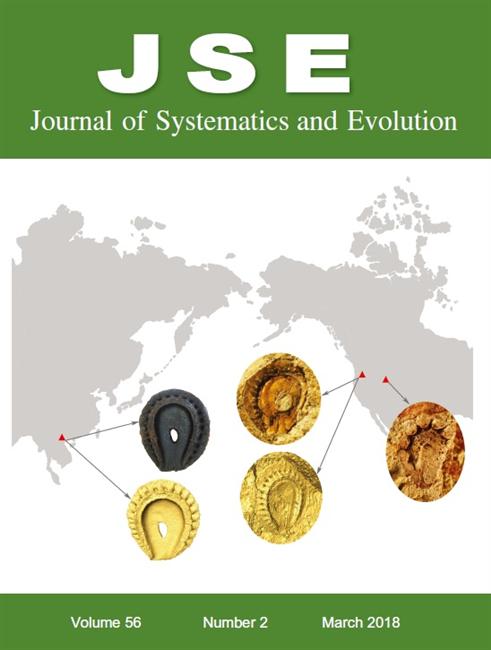Xin-Mao Zhou, Liang Zhang, Ngan Thi Lu, Xin-Fen Gao, Li-Bing Zhang
We undertook phylogenetic analyses to resolve the relationships of Pteridrys and related taxa based on six plastidmarkers (atpA, atpB, matK& rps16-matK, rbcL, rps4& rps4-trnS, and trnL & trnL-F) and nuclear pgiC.We included 195 accessions representing approximately 147 species in 38 genera, and seven of the nine families in Polypodiineae (eupolypods I). Tectariaceae s.l. (i.e., Arthropteris, Draconopteris, Hypoderris, Malaifilix, Pteridrys, Tectaria, and Triplophyllum in addition to Polydictyum) is recovered asmonophyletic (97% maximum likelihood bootstrap value), but with low (<50%) maximum parsimony jackknife value. The family Tectariaceae s.l. is therefore the only family in ferns without a corresponding non-parametric-based strong support in spite of our data totaling 9616 aligned base pairs. Tectariaceae s.l. can not be unambiguously recognized by any of the 13morphological characters analyzed. However, if the clade composed of Draconopteris, Malaifilix, Polydictyum, and Pteridrys (DMPP) is recognized as a distinct family, at least four morphological characters enable the distinction of the DMPP clade from its sister clade. Considering the uncertainty in the monophyly, the diagnosability, and the deep divergence, we propose to establish a new family, Pteridryaceae, to accommodate the DMPP clade. Species of Pteridryaceae share mostly the following characteristics: erect to suberect rhizomes, reduced basal pinnae, anastomosing or free venation, absence of catenate hairs at the leaf surface, and perine ornamentation lacking spines or spinules. Identification keys are provided for the four genera and 31 species of the DMPP clade (or Pteridryaceae). Reflecting the presented results, the recognition of Arthropteridaceae is the preferred taxonomic status of the Arthropteris clade.

